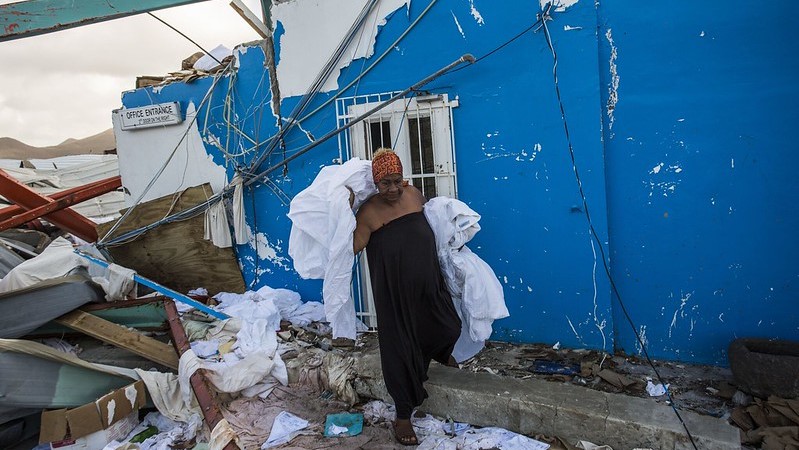Governments have collectively pledged more than $400 million to establish a loss and damage fund for the victims of climate disaster.
On day one of UN climate talks in Dubai, negotiators rubber-stamped plans to get the fund up and running. The arrangements had been hashed out by a transitional committee over five fraught meetings in the past year.
The Cop28 president Sultan Al Jaber hailed the decision as “historic”, with a broad smile, after watching delegates burst into a round of applause.
“This sends a positive signal of momentum to the world and to our work here in Dubai,” he added.
Initial pledges
Following the text’s adoption, a handful of countries promised contributions to the start-up phase of the fund. Germany and Cop28 hosts the United Arab Emirates committed $100 million each, followed by the United Kingdom (£40m or $50.5m), the United States ($17.5m) and Japan ($10m).
EU member states, including Germany, are expected to collectively deliver at least €225m ($245m).
The relatively paltry contribution from the US – the world’s largest economy – attracted immediate criticism. Mohamed Adow, director of Power Shift Africa, called it “embarrassing.
Avinash Persaud, special envoy to Barbados prime minister Mia Mottley and a member of the transitional committee, welcomed the “hard-fought historic agreement”. But he said the pledges were unlikely to represent new and additional resources.
“Because the fund was only approved today, we can’t expect [them] to open up new budgets… so this initial money will be coming from existing budgets,” he told a press huddle, as reported by Carbon Brief’s Josh Gabbatiss.
How the fund will work
Significantly more money will be needed to help vulnerable communities benefit from the new mechanism once it gets up and running. The fund is designed to receive contributions “from a wide variety of sources”, including grants and cheap loans from the public and private sectors, and “innovative sources”.
The World Bank is set to initially host the fund for four years, despite strong resistance to its involvement from developing countries.
All developing countries “particularly vulnerable” to the effects of climate change will be eligible to benefit from the mechanism. However, the definition of vulnerability – one of the thorniest issues – is not detailed in the text.
The agreement is an “early win” for the Cop28 hosts, as it sets the start of the conference on a positive collaborative tone, Ana Mulio Alvarez, a loss and damage expert at E3G, told Climate Home.
Speaking at the plenary session, several negotiators underlined the difficult compromises needed to strike a deal.
Compromise deal
Developing countries had initially opposed a role for the World Bank, airing concerns over high costs, slow procedures and the US influence on the institution. But they eventually relented and accepted a compromise, with certain conditions attached to World Bank involvement and an out after four years.
Rich nations attempted to broaden the pool of donors expected to contribute, but made limited headway. The text “urges” developed countries to provide financial resources to the fund, while other nations are only “encouraged” to do so “on a voluntary basis”.
The EU climate chief, Wopke Hoekstra, has said China and petrostates like the UAE, Saudi Arabia and Qatar should pay into the fund. Others want to broaden the donor base to countries with high-emitting economies categorised by the UN as developing nations like South Korea and Russia.
“The UAE’s contribution of $100 million is welcome, both for its solid cash and for the pressure it puts on the world’s biggest polluters to also step up and recognise their responsibility for decades of pollution,” said Teresa Anderson, climate justice campaigner with ActionAid International.
“Innovative sources” of finance could mean carbon taxes on international aviation or shipping, financial transactions or fossil fuels. France and Kenya are set to launch a coalition at Cop28 to develop these options.
Civil society experts have said much more work lies ahead and, ultimately, the success of the fund will depend on how much money it is equipped with.
The cost of loss and damage for developing countries is projected to reach $400 billion per year by 2030.
“Although rules have been agreed regarding how the fund will operate there are no hard deadlines, no targets and countries are not obligated to pay into it,” said Adow. “The most pressing issue now is to get money flowing into the fund and to the people that need it.”
